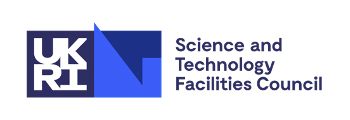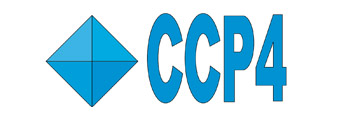Day 1
09:00 – 12:00
Topics:
- MX beamline overview
- Diamond II / Alternatives & MX-Bridge
- Automation & software developments on I03 and I04 towards MX-Bridge
- Serial crystallography at Diamond (I24) and XFELs
- Updates on VMXi, VMXm, XChem/I04-1 and HeXI
- Membrane Protein Laboratory at Diamond
- Access and training
11:00 – 11:30
Diamond MX group update / Diamond II and MXBridge
Dave Hall
Diamond Light Source
11:30 – 11:45
Diamond Isn’t Hard: how to access Diamond MX beamlines and training opportunities
Felicity Bertram
Diamond Light Source
11:45 – 12:00
Future of MX Crystallography at the ISIS Neutron and Muon Source
Craig Bull
UKRI – STFC ISIS
12:00-13:00
Lunch
13:00 – 13:30
An update on XChem activities
Lizbe Koekemoer
University of Oxford, UK
13:30 – 13:50
A progress update on the High energy Xtallography Instrument (HeXI) at Diamond Light Source
Alistair Siebert
Diamond Light Source
13:50 – 14:10
Getting the most from micron sized crystals
Anna Warren
Diamond Light Source
14:10 – 14:30
Working with membrane proteins at Diamond
Andrew Quigley
Diamond Light Source
14:30-15:00
Coffee Break
15:00 – 15:20
Current Software Activities on MX Beamlines
Graeme Winter
Diamond Light Source
15:20 – 15:35
From micro-crystals to macro-data – micro and serial crystallography at Beamline I24
Danny Axford
Diamond Light Source
15:35 – 15:50
Exploring enzyme dynamics using a combination of synchrotron and XFEL methods
Jos Kamps (remote)
Diamond Light Source
15:50 – 16:05
Routine room temperature structure determination at VMXi
Mike Hough
Diamond Light Source
16:05-16:30
DUC discussion
David Briggs, Colin Levy
16:30-17:30
Break
16:30-17:30
CCP4 WG1 Meeting
Virtual Lunchtime Bytes
16:30 – 17:30
PDB-REDO/AlphaFill Q&A
Robbie Joosten
NKI, NETHERLANDS
Determination of optimal resolution with PAIREF
Petr Kolenko
Czech Technical University in Prague, CZECH REPUBLIC
Identification and validation of protein and nucleic acid model sequences
Grzegorz Chojnowski
EMBL Hamburg, GERMANY
Coot 1 and Moorhen
Paul Emsley
UKRI MRC-LMB, UK
Buccaneer, Nautilus and ModelCraft
Paul Bond
University of York, UK
SymProFold – Structural prediction of symmetrical biological assemblies
Christoph Buhlheller
University of Graz
Session 1
17:30 – 18:05
Key note: Lessons learned from SARS-CoV2 drug screening campaigns: harvesting all existing MX tools/pipelines at the time by a collaborative group of users.
Patrick Reinke
Deutsches Elektronen-Synchrotron, DESY, GERMANY
18:05 – 18:45
"Crystallography is dead – long live Crystallography!" – round table discussion
Elspeth Garman (Chair), David Brown, Ashwin Chari, Arwen Pearson
University of Oxford / Servier, FRANCE / Max Planck Institute for Multidisciplinary Sciences, GERMANY / Center for Free-Electron Laser Science – CFEL, GERMANY
18:45 – 19:00
Break
Mixer / dinner / Poster session
Day 2
09:00 – 09:10
What's new in CCP4?
Ville Uski
UKRI-STFC CCP4, UK
09:10 – 09:35
Dials User Interface 2
Luis Fuentes-Montero
Diamond Light Source Ltd
09:35 – 10:00
Moorhen: interactive model building on the web
Filomeno Sanchez Rodriguez
University of York
10:00 – 10:30
Developments in Multi-Crystal Data Processing
Amy Thompson
Diamond Light Source Ltd
10:30 – 11:00
Break
Session 2
Preparation and data collection: Planning and execution of diffraction experiment
11:00 – 11:30
Identifying radiation damage and avoiding it in the first place
Elspeth Garman
University of Oxford, UK
11:30 – 12:00
Use the right tool, right: making the best use of the right X-ray facility for your science
Graeme Winter
Diamond Light Source Ltd, UK
12:00 – 12:30
Automated workflows for strategy computation and data collection at synchrotron beamlines
Rasmus Fogh
Global Phasing Ltd, UK
12:30 – 14:00
Lunch
13:00 – 14:00
Lunchtime Bytes
In person only
Session 3
Structure Solution & Model Building (post-AlphaFold)
14:00 – 14:30
AlphaFold and it’s impact on streamlining structure solution
Dorothee Liebschner
Lawrence Berkeley National Laboratory, USA
14:30 – 15:00
Light atoms identification and location by anomalous scattering
Kamel el Omari
Diamond Light Source Ltd, UK
15:00 – 15:30
Being Efficient (or Lazy) in Coot
Paul Emsley
UKRI MRC-LMB
15:30 – 16:00
Break
Session 4
The important final touches: Modelling Subtle / Difficult Structural Features
16:00 – 16:30
Seven years of ISOLDE: Lessons learned and paths forward
Tristan Croll
Altos Labs, UK
16:30 – 17:00
Building atomic models of glycans with confidence
Lucy Schofield
University of York, UK
17:00 – 17:30
Dealing with metal containing ligands
Garib Murshudov
UKRI MRC-LMB
17:30 – 19:00
Break
19:00 – 00:00
Conference Dinner and social including Ceilidh
Day 3
Session 5
Weak Signal / Large Datasets: Partial Data and Partial Occupancies
09:00-09:30
Serial Data Processing (T-REXX).
Arwen Pearson
Center for Free-Electron Laser Science – CFEL, GERMANY
09:30-10:00
Xtrapol8: Identifying and modelling low-occupancy states in macromolecular crystallography
Elke de Zitter
Institut de Biologie Structurale, FRANCE
10:00-10:30
Everything, Everywhere, All at Once: multi-state, multi-dataset, multi-model refinement
Nick Pearce
Linköping University, SciLifeLab, SWEDEN
10:30-11:00
Break
Session 6
Experimental Interactions: Ligands, everywhere, all at once
11:00-11:30
Decision making in MX – how to be a productive structural biologist
Judith Debreczeni
Astra Zeneca, UK
11:30-12:00
Managing your data with LIMS systems
Ed Daniel
University of Oulu, FINLAND
12:00-12:30
Validation of Ligands: Making decisions while modelling
Oliver Smart
12:30 – 13:00
Lunch
13:00 – 14:00
Lunchtime Bytes
In person only
Session 7:
Structural Analysis: Climbing the data mountain
14:00-14:30
Teasing out the secrets of subtle protein dynamics
Helen Ginn
Deutsches Elektronen-Synchrotron, DESY, GERMANY
14:30-15:00
Probing crystallin using UV/X-ray crystallography
Briony Yorke
University of Leeds, UK
15:00-15:30
Analysing models from ultra-high resolution crystallography
Ashwin Chari
Max Planck Institute for Multidisciplinary Sciences, GERMANY


